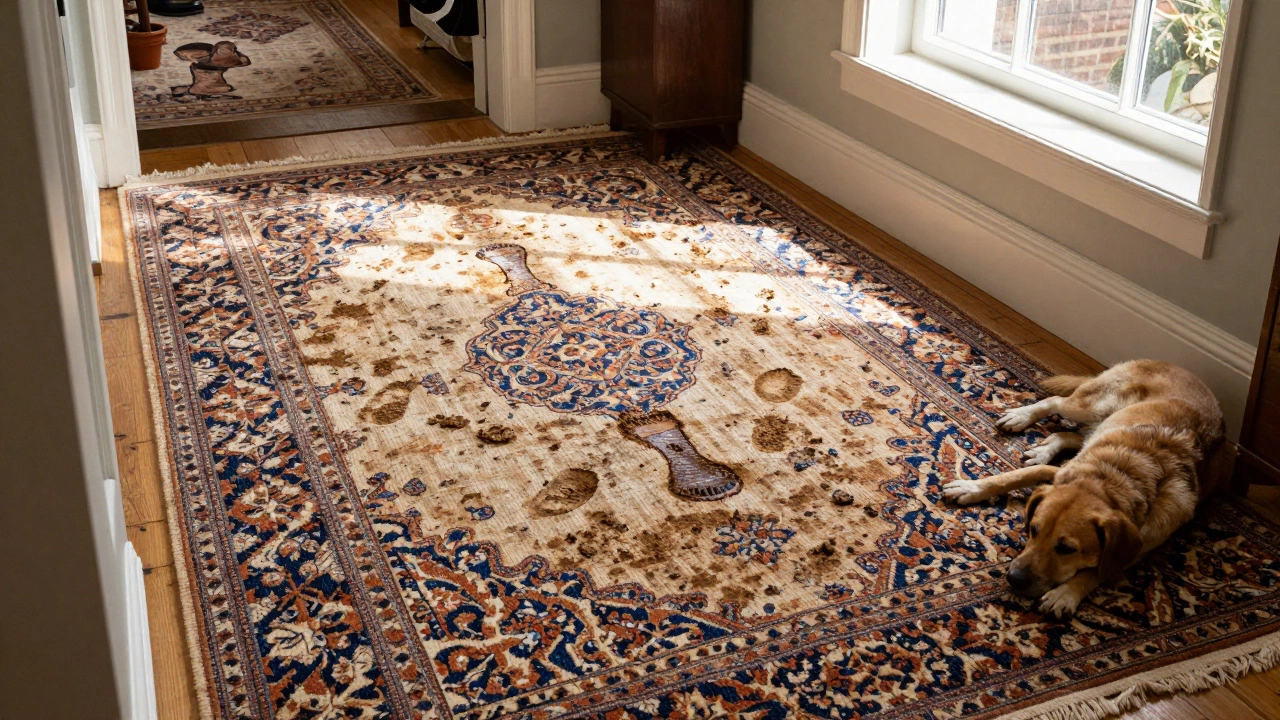Rug Materials: A Practical Guide to Choosing Eco‑Friendly Fibers
If you're buying a rug, the first thing to think about is what it’s made of. The material decides how soft it feels, how long it lasts, and how kind it is to the planet. Below you’ll find the most common rug fibers, what they’re good at, and which rooms they work best in.
Natural vs Synthetic Fibers
Wool is a classic natural fiber. It’s warm, naturally stain‑resistant and feels great underfoot. Wool rugs bounce back after a spill, so they’re a solid choice for high‑traffic areas like living rooms.
Cotton is light, easy to clean and great for a casual look. Because it’s thin, cotton rugs work well in kitchens or bedrooms where you don’t need heavy cushioning.
Jute and Seagrass are plant‑based fibers that give a rustic vibe. They’re sturdy, dry quickly and work perfectly in entryways or sunrooms. Just keep them out of wet areas – they can warp if they get too damp.
Polypropylene (Olefin) is a synthetic option that mimics natural looks while staying cheap and stain‑proof. It’s ideal for kids’ rooms or pet zones because spills wipe away easily.
Polyester offers soft texture and vibrant colors. It’s less eco‑friendly than natural fibers, but many brands now use recycled PET bottles to cut down waste.
How to Pick the Right Material for Your Space
Start by matching the rug’s durability to the room’s traffic. For a hallway, choose something tough like wool or a high‑grade polypropylene. For a bedroom, softer cotton or plush polyester works fine.
Think about maintenance. If you hate vacuuming, go for a low‑pile wool or a synthetic rug that sheds less. If you love natural fibers, pick a tightly woven jute that resists dirt, but be ready to shake it out regularly.
Consider the climate. Wool breathes and stays warm in winter, while cotton feels cool in summer. In damp climates, avoid jute near windows that might get moist.
Look for eco‑labels. Many manufacturers now certify their wool as responsibly sourced or their polyester as recycled. A quick check on the tag can confirm you’re making a greener pick.
Finally, test the feel. Walk barefoot on a sample if you can. A rug should feel comfortable under your feet without being too scratchy or too slick.
By understanding the main rug materials and matching them to your lifestyle, you’ll end up with a floor covering that looks great, lasts long, and aligns with your eco values. Happy rug hunting!
-

What Type of Rugs Last the Longest? Top Durable Rugs for High-Traffic Homes
Discover which rug materials last the longest in high-traffic homes. Wool and polypropylene outperform synthetics-learn what to buy, what to avoid, and how to make your rug last decades.
-

How to Spot an Expensive Rug: Quick Tells for Every Shopper
Ever walked into a store and wondered if that stunning rug is actually worth its price tag? This article breaks down the clearest signs that a rug is genuinely high-end. You'll learn what materials, weaving techniques, and design details set luxury rugs apart from the mass-produced kinds. We'll also touch on expert tricks like checking the back of the rug and feeling the fibers. Get ready to spot a true investment piece, even if you’re totally new to rug shopping.
